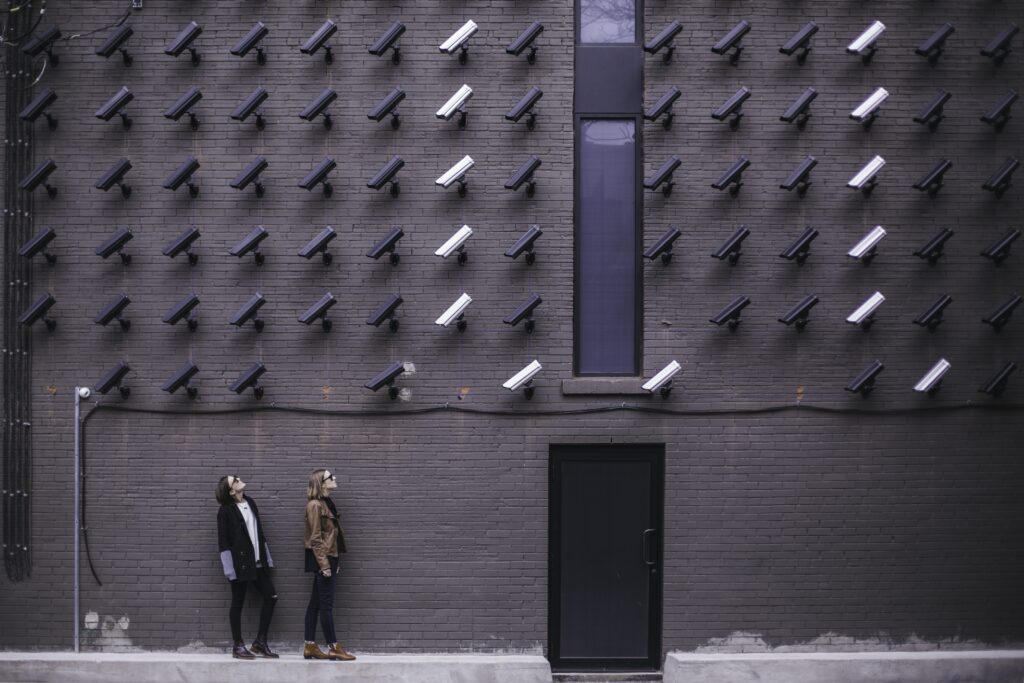Are you concerned about the safety and security of shopping centers? If so, you’re not alone. As shopping centers continue to grow in popularity, it becomes increasingly important to prioritize the well-being of visitors and employees. In this article, we will explore some of the best practices for designing safe and secure shopping centers. From effective surveillance systems to well-lit parking lots, these practices not only enhance the overall experience but also instill a sense of trust and confidence in shoppers. So, whether you’re a developer, manager, or simply someone who enjoys shopping, join us as we uncover the secrets to creating a safe and secure environment within our modern shopping centers.
Understanding the Need for Safety and Security
Shopping centers are bustling hubs of economic activity, attracting a multitude of shoppers daily. With this high level of foot traffic, ensuring the safety and security of visitors becomes paramount. Safety and security in shopping centers are of utmost importance due to several reasons.
First and foremost, the well-being of shoppers and staff should be the top priority for shopping center management. By providing a safe environment, they are fostering a sense of trust and encouraging repeat visits. Customers want to feel secure while spending their time and money at shopping centers, knowing that their well-being is being prioritized.
Secondly, incidents of crime can have severe economic implications for shopping centers. The occurrence of thefts, robberies, or vandalism can not only result in financial losses but can also tarnish the reputation of the shopping center. A negative perception of safety can deter potential customers from visiting, leading to a decrease in revenue for tenants and affecting the overall viability of the shopping center.
Furthermore, insecure shopping centers may also have negative social implications. If shoppers perceive a shopping center as unsafe, it can lead to a decline in community cohesion and limit opportunities for social interaction. Creating a safe and secure environment fosters a positive sense of community, where people can come together and enjoy their shopping experiences without fear or apprehension.
Importance of Safety and Security in Shopping Centers
The importance of safety and security in shopping centers cannot be overstated. By prioritizing the safety and security of visitors, shopping centers can create a pleasant and memorable experience, attracting a loyal customer base.
Ensuring safety in shopping centers instills confidence in shoppers, encouraging them to spend more time exploring various stores and ultimately increasing sales. When shoppers are confident that their well-being is being taken care of, they are more likely to enjoy their shopping experience and be open to visiting in the future. A safe and secure environment also enhances the image and reputation of the shopping center, making it an attractive destination for shoppers.
In terms of security, it is crucial to prevent incidents like thefts, robberies, and vandalism. The presence of visible security measures such as surveillance cameras, security personnel, and well-designed layouts can act as a deterrent to potential criminals. By implementing robust security measures, shopping centers can minimize the risk of such incidents, protecting the assets and interests of both the center and its tenants.



This image is property of images.unsplash.com.
Potential Risks and Threats in Shopping Centers
Understanding the potential risks and threats that shopping centers face is essential for effective safety and security measures. Some common risks include theft, robberies, vandalism, terrorist attacks, and natural disasters.
Theft and shoplifting are prevalent concerns in shopping centers, with criminals attempting to exploit crowded spaces for their own gains. Proper security measures, such as the positioning of surveillance cameras and the strategic placement of security personnel, can help deter such criminal activities.
Robberies, although relatively rare, can have severe consequences. Proper lighting, clear lines of sight, and well-trained security personnel can help minimize the risk of robberies and ensure a safe environment for shoppers.
Vandalism and graffiti not only damage the physical appearance of the shopping center but also create an atmosphere of neglect and insecurity. Implementing security cameras and prompt response mechanisms can aid in dealing with such incidents swiftly.
Terrorist attacks and natural disasters present unique challenges in terms of safety and security. Developing emergency response plans, conducting drills, and ensuring the availability of emergency exits are crucial in preparing for such situations.
By identifying and understanding these potential risks and threats, shopping center management can devise appropriate safety and security strategies to protect both visitors and assets.
Economic and Social Implications of Insecure Shopping Centers
Insecure shopping centers can have significant economic and social implications. From an economic perspective, incidents of crime and insecurity can result in financial losses for both the shopping center and its tenants. Theft and damage to property can lead to increased insurance costs, repair expenses, and the loss of revenue from disrupted operations. Additionally, the negative perception caused by insecurity can drive away potential customers, leading to decreased foot traffic and sales.
Socially, insecure shopping centers can negatively impact the sense of community and social cohesion. People may feel reluctant to visit or spend time in a shopping center that is perceived as unsafe. This can limit opportunities for social interaction and connection between community members. Insecure shopping centers may also become gathering places for undesirable activities, further deterring law-abiding citizens from visiting.
Creating a safe and secure shopping center is not only beneficial from an economic perspective but also enhances the overall livability and well-being of the community. By providing a secure environment, shopping centers can contribute to the social fabric of the community, fostering a sense of safety, trust, and community spirit.



This image is property of images.unsplash.com.
Planning and Designing for Safety
When planning and designing a shopping center, incorporating safety considerations from the outset is crucial. By integrating safety measures into the layout and design, potential risks can be minimized and an overall safer environment can be created.
Site selection is the first important consideration. Choosing a location that has low crime rates and is easily accessible to a wide range of customers can significantly contribute to the overall safety of the shopping center. Proximity to emergency services and infrastructure, such as police stations and hospitals, should also be factored into the decision-making process.
The layout design plays a vital role in improving surveillance and preventing criminal activities. By creating open, well-lit spaces with clear lines of sight, potential hiding spots for criminals can be minimized. Placing communal areas, such as food courts, in highly visible locations can further enhance natural surveillance, enabling shoppers to keep an eye on their surroundings.
Implementing the concept of “natural surveillance” in the design involves strategically positioning windows, entrances, and communal areas to maximize visibility. This allows both security personnel and shoppers to have clear sightlines and maintain a high level of vigilance. Clear visibility not only deters criminals but also creates a sense of safety among visitors.
Another important principle is the concept of “territorial reinforcement.” This involves the use of physical elements like landscaping, signage, and fencing to clearly demarcate public and private spaces. By establishing clear boundaries, visitors can easily identify different areas within the shopping center, reducing the likelihood of unauthorized entry and enhancing overall security.
By carefully considering these planning and design principles, shopping centers can create a safe and secure environment that promotes a positive shopping experience for visitors.
Implementing Security Infrastructure
Implementing robust security infrastructure is essential for the safety and security of shopping centers. By combining technological advancements with physical security measures, shopping centers can significantly enhance their overall security posture.
Incorporating closed-circuit television (CCTV) systems and alarm systems is a foundational step in ensuring the safety of the shopping center. Strategically placed surveillance cameras can monitor key areas, deterring criminal activities and providing valuable evidence in case of incidents. Alarm systems can alert security personnel and visitors in the event of a security breach, enabling swift response and evacuation if necessary.
Advanced security technologies, such as artificial intelligence (AI), can further assist in the identification and prevention of potential threats. Facial recognition software and behavior analysis algorithms can help detect suspicious activities and alert security personnel in real-time. AI-powered video analytics can also automate the monitoring process, quickly identifying abnormal behavior patterns and potential security risks.
Physical security measures like bollards and barriers are effective in preventing vehicle-based attacks and enhancing pedestrian safety. Strategically placing and designing these barriers can mitigate the risk of unauthorized vehicular access, ensuring the safety of shoppers.
Proper lighting is essential for enhanced visibility and crime prevention. Well-lit areas create a more secure environment, making it easier for visitors and security personnel to identify potential threats. Illuminating parking lots, walkways, and secluded areas helps deter criminal activities while increasing the comfort and sense of safety for shoppers.
Emergency entrances and exits should be designed to provide easy access and evacuation routes in case of emergencies. By incorporating emergency exit signs, ensuring unobstructed pathways, and regularly maintaining emergency systems, shopping centers can be better prepared for critical situations.
By integrating these security infrastructure elements, shopping centers can establish a comprehensive security system that addresses various potential threats.



This image is property of images.unsplash.com.
Fire Safety Measures
One crucial aspect of safety in shopping centers is fire prevention and preparedness. Fire incidents can have catastrophic consequences, endangering the lives of shoppers, staff, and the structural integrity of the shopping center. Designing and implementing robust fire safety measures is therefore of utmost importance.
Designing fire escape routes is a fundamental step in fire safety planning. Emergency exits should be clearly marked and strategically placed throughout the shopping center, ensuring swift and safe evacuation in case of a fire. These exit routes should be free from obstacles and regularly maintained to guarantee their functionality.
The installation and maintenance of fire extinguishers, sprinklers, and alarms are critical for fire prevention and response. Fire extinguishers should be easily accessible, regularly inspected, and properly maintained. Sprinkler systems can help suppress fires and prevent their spread, providing valuable time for evacuation. Smoke detectors and fire alarms should be regularly tested to ensure their operational efficiency and immediate response to potential fire incidents.
Educating staff about fire safety protocols is crucial for effective emergency response. Regular training sessions should be conducted to familiarize staff with evacuation procedures, fire extinguisher usage, and alarm systems. By empowering staff with the knowledge and skills necessary to handle fire emergencies, shopping centers can ensure a rapid and efficient response, minimizing the potential impact of a fire incident.
By implementing these fire safety measures, shopping centers can create a safer environment for visitors and ensure swift response in the event of a fire emergency.
Preventing Theft and Vandalism
Theft and vandalism can have serious implications for shopping centers. Implementing strategies and measures to prevent these crimes is essential for maintaining a secure environment for visitors and protecting the assets of the shopping center and its tenants.
Positioning security cameras strategically can play a significant role in preventing theft. Cameras should be placed in high-risk areas such as entrances, exits, parking lots, and in close proximity to valuable merchandise. Visible cameras act as a deterrent to potential thieves and provide valuable evidence in case of incidents.
Security personnel should be strategically placed throughout the shopping center to ensure effective response and deter criminal activities. By having a visible security presence, shoppers feel safer and potential criminals are more likely to think twice before committing theft or vandalism.
Anti-shoplifting technologies can further enhance theft prevention efforts. Measures such as electronic article surveillance (EAS) systems, RF tags on merchandise, and security gates at store entrances can help deter shoplifters. These technologies create an additional layer of security, alerting staff to attempted thefts and enabling quick intervention.
Dealing with vandalism and graffiti requires proactive measures. Shopping centers should promptly remove any instances of vandalism and graffiti to maintain their visual appeal and discourage further acts of destruction. Implementing graffiti-resistant surfaces can make cleaning easier and deter vandals from targeting the exterior of the shopping center.
By implementing these preventive measures, shopping centers can create an environment that discourages theft and vandalism, enhancing the overall safety and security for shoppers and tenants.



This image is property of images.unsplash.com.
Enhancing Safety through Landscaping
Landscaping plays a crucial role in enhancing safety and security in shopping centers. Thoughtful landscaping design can contribute to the overall safety and aesthetics of the environment.
Creating clear sight lines through strategic landscape design is essential for preventing potential criminal activities. By avoiding excessive foliage or dense shrubbery, potential hiding spots for criminals can be minimized. Trees and plants should be selected and positioned to maintain clear visibility throughout the shopping center, ensuring that both visitors and security personnel can easily monitor their surroundings.
Avoiding hidden spots through landscaping is equally important. Well-designed landscapes should eliminate secluded areas where criminal activities can occur unnoticed. By employing open spaces and avoiding blind spots, potential threats can be easily identified and deterred.
Vegetation in the form of well-maintained trees, shrubs, and flowers can provide additional safety benefits. Trees, apart from adding aesthetic value, can act as natural barriers, discouraging unauthorized access. The presence of green spaces can also contribute to the overall well-being of shoppers, creating a calming and inviting environment.
Incorporating safety-focused landscaping features such as well-lit pathways, visible signage, and benches in well-populated areas can further contribute to a safe and secure shopping experience.
Managing Crowd and Traffic
Managing crowd and traffic is essential for ensuring the safety and convenience of visitors in shopping centers. By implementing effective crowd and traffic management strategies, shopping centers can minimize congestion, prevent accidents, and provide a pleasant experience for shoppers.
Designing entrances and exits for smooth traffic flow is crucial. Adequate spacing, clearly marked lanes, and designated drop-off areas all contribute to efficient traffic management. By carefully designing the layout of these entry and exit points, the overall flow of vehicles can be improved, reducing the likelihood of accidents and congestion.
Planning for peak hours and special events is important to accommodate high volumes of shoppers. By understanding peak hours and estimating anticipated foot traffic, shopping centers can adjust staffing levels, parking availability, and pathways to ensure a smooth shopping experience for visitors.
Effective signage is essential for easy navigation in shopping centers. Clear and visible signage should be strategically placed to guide visitors through the parking areas, entrances, and within the shopping center itself. Properly labeled parking spaces for disabled individuals should also be provided to ensure accessibility and convenience for all shoppers.
By managing crowd and traffic effectively, shopping centers can create a safer and more enjoyable experience for visitors, reducing the likelihood of accidents and congestion.



This image is property of images.unsplash.com.
Digital Security Measures
In today’s digital age, protecting customer data and transaction information is crucial for the safety and security of shopping centers. By implementing appropriate digital security measures, shopping centers can safeguard sensitive information and maintain the trust of their customers.
Protecting customer data and transaction information involves securing the network infrastructure and implementing encryption technologies. Firewalls, intrusion detection systems, and secure servers help protect against unauthorized access and data breaches. Regular security audits should be conducted to assess vulnerabilities and ensure the effectiveness of digital security measures.
Implementing cybersecurity best practices is essential. This includes maintaining up-to-date software, regularly patching and updating systems, and enforcing strong password policies. Employee training on cybersecurity awareness and best practices can help prevent human error and ensure the safe handling of customer data.
Training staff on potential digital threats is crucial to prevent social engineering attacks and phishing attempts. By educating employees about common tactics used by cybercriminals and providing them with the knowledge to identify and report suspicious activities, shopping centers can minimize the risk of data breaches and financial losses.
By prioritizing digital security, shopping centers can protect customer information, maintain their reputation, and inspire confidence in the safety of transactions.
Incorporating Accessibility and Universal Design
Creating inclusive spaces that cater to the needs of all visitors is essential for shopping centers. By incorporating accessibility and universal design principles, shopping centers can ensure the safety and convenience of people with disabilities.
Making shopping centers safe for people with disabilities involves removing physical barriers and providing accessible facilities. This includes designing wheelchair ramps, wider doorways, and accessible restrooms. Ensuring that amenities such as elevators, escalators, and parking spaces are easily accessible to individuals with disabilities is also crucial.
The benefits of a universal design approach go beyond accessibility. Universal design principles strive to create environments that can be used by all individuals, regardless of their abilities. By designing spaces that are inclusive and customizable, shopping centers can accommodate the diverse needs of their visitors, ultimately enhancing the overall shopping experience for everyone.
Inclusive safety measures for all users should be considered when designing shopping centers. This includes providing appropriate lighting levels, audible signals at crosswalks, and tactile paving for individuals with visual impairments. By considering the needs of all visitors, shopping centers can create an environment where safety and accessibility go hand in hand.
Regular Review and Updates of Security Measures
Ensuring the efficacy of safety and security measures requires regular review and updates. By conducting regular safety audits, shopping centers can identify potential vulnerabilities and make necessary changes to enhance security.
The importance of regular safety audits cannot be overstated. These audits involve reviewing existing security measures, identifying shortcomings, and developing strategies for improvement. By seeking input from security professionals, tenants, and visitors, shopping center management can gain valuable insights into potential areas of concern or improvement.
Updating technology and infrastructure is crucial to keep pace with evolving threats and advancements in security technology. By regularly evaluating and upgrading surveillance systems, alarm systems, and access control systems, shopping centers can maintain a high level of security. Incorporating emerging technologies, such as facial recognition software and AI-driven analytics, can further enhance the effectiveness of security measures.
Learning from incidents is essential for continuous improvement. Analyzing past incidents, both within the shopping center and in similar environments, can provide valuable lessons and insights. From these lessons, necessary changes can be implemented to prevent similar incidents in the future.
By regularly reviewing and updating security measures, shopping centers can stay ahead of potential security risks, ensuring the ongoing safety and security of visitors.
In conclusion, designing safe and secure shopping centers requires careful consideration of various factors. From planning and designing for safety to implementing robust security infrastructure and regularly reviewing and updating security measures, shopping center management plays a vital role in creating a secure environment for visitors. By prioritizing safety and security, shopping centers can foster a sense of trust, attract loyal customers, and enhance the overall well-being and livability of the community they serve.
